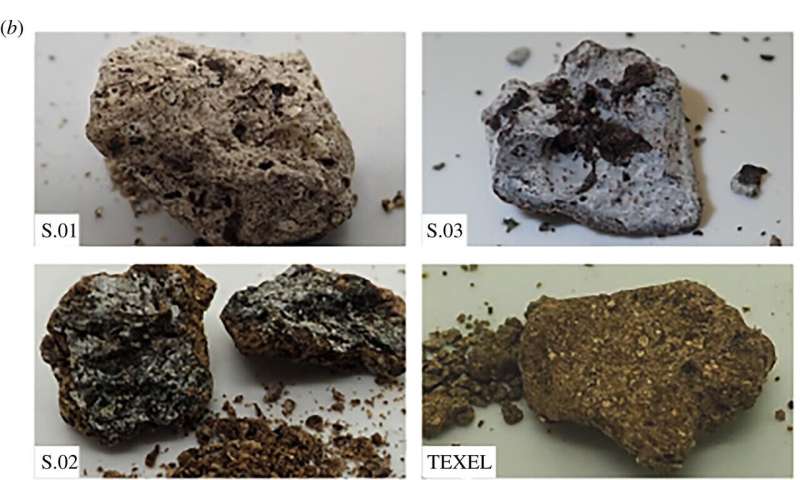
A team of researchers from Denmark, the U.K. and Ireland has identified the origin of ambergris. In their paper published in the journal Biology Letters, the group describes analyzing DNA sequences from ambergris samples found on beaches in New Zealand and Sri Lanka, and what they learned.
Ambergris is a lump of material often found on beaches. Because of its rarity, it is extremely valuable, and dogs and even camels have been trained to use their strong senses of smell to find it. Over human history, ambergris has been valued for its musky scent. For thousands of years, people have been finding washed-up ambergris on beaches around the world. Over time, whalers began suggesting it was made by sperm whales—they had found samples of it in whale guts. But until now, it had never been proven that the whales actually created the material.
People use it in oils to scent objects such as gloves or as an anointment. But its origin has been murky. Examples of ambergris have been found in the back end of sperm whales, suggesting it might be nothing more than condensed feces. In this new effort, the researchers used DNA sequencing to test whether ambergris found on beaches is the same material as that found in sperm whales, and if so, to confirm whether it was made by the whales.
The work involved obtaining small samples from ambergris lumps found on beaches in New Zealand and Sri Lanka and conducting DNA sequencing. The researchers then compared their findings with DNA sequences from sperm whales, and found a match. The sequencing confirmed that the jetsam ambergris was genetically the same as whale ambergris, and both were created by sperm whales. But that is not the end of the story. Now that scientists know that sperm whales create ambergris, they want to know how and why it is formed, and whether it serves any useful purpose for the whales. Some have suggested in the past that if the lumps do come from whales, they are likely little more than rectal pearls, fecal matter in the rectum that builds up on a bit of indigestible material until it grows large enough to be expelled
More information: Ruairidh Macleod et al. DNA preserved in jetsam whale ambergris, Biology Letters (2020). DOI: 10.1098/rsbl.2019.0819
No comments:
Post a Comment